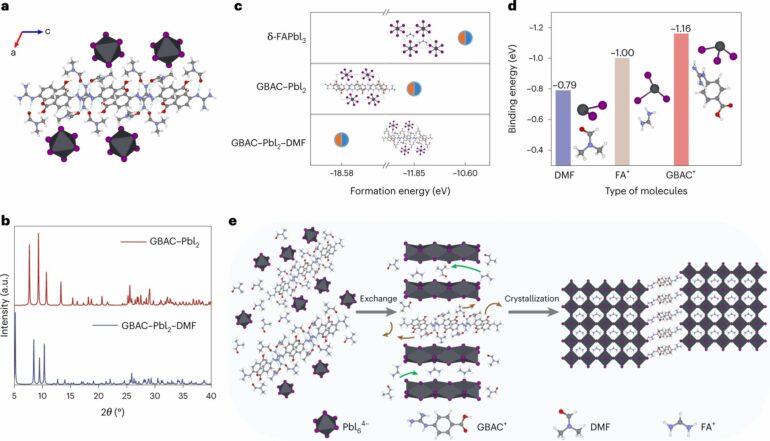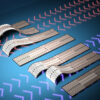Prof. Ge Ziyi’s team at the Ningbo Institute of Materials Technology and Engineering (NIMTE) of the Chinese Academy of Sciences has developed a novel multifunctional additive to passivate defects and promote charge carrier transport, thereby enhancing the efficiency and stability of inverted perovskite solar cells (PSCs).
The study was published in Angewandte Chemie International Edition.
PSCs have attracted considerable attention in the field of new-generation photovoltaic technologies due to their exceptional optoelectronic properties, low fabrication cost, and the prospect of large-area device fabrication. However, the commercialization and practical applications of PSCs have still been limited by the relatively low power conversion efficiency (PCE) and poor long-term stability, which can be attributed to the open-circuit voltage loss in devices and crystallographic defects in perovskite films.
To address this issue, the researchers used potassium (4-tert-butoxycarbonylpiperazin-1-yl) methyl trifluoroborate (PTFBK) as an additive in the perovskite precursor solution. The introduction of PTFBK could effectively passivate the defects and improve the extraction of carriers in perovskite films.
In addition, the effective combination of multiple passivation effects enhanced the crystallization ability of perovskite, resulting in high-quality perovskite films with larger grain size.
Thanks to the synergistic effect of PTFBK, highly efficient rigid and flexible p-i-n PSCs with high PCEs of 24.99% and 23.48% were obtained, respectively.
Moreover, benefiting from the hydrogen bonding between formamidinium and fluorine, the unencapsulated PTFBK-modified device exhibited excellent thermal, humidity, and light stability under various conditions, such as continuous eating at 85°C in N2-filled containers, ambient conditions at 60%–70% relative humidity, and continuous illumination at 100 mW cm-2.
The developed flexible PSCs can retain 85% of their initial PCE after 5,000 bending cycles at a radius of 5 mm, showing remarkable bending stability.
This study paves the way for the future development and commercialization of PSCs and related perovskite photovoltaic technologies.
More information:
Jun Li et al, Multifunctional Trifluoroborate Additive for Simultaneous Carrier Dynamics Governance and Defects Passivation to Boost Efficiency and Stability of Inverted Perovskite Solar Cells, Angewandte Chemie International Edition (2024). DOI: 10.1002/anie.202316898
Provided by
Chinese Academy of Sciences
Citation:
Novel multifunctional additive boosts efficiency, stability of inverted perovskite solar cells (2024, March 26)



